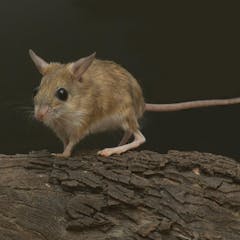
Articles on Rodents
Displaying 1 - 20 of 23 articles

The sad case of the Norfolk Island morepork shows we need a way to control or eradicate invasive rodents without killing native species.

An evolutionary biologist is studying what these resilient urban pests can teach us about adaptation and evolution.

On a small, remote island in the Pacific Ocean, an unlikely predator feasts on the world’s largest albatross colony. Researchers are trying to figure out how to stop these murderous mice.

Native rats and mice don’t usually evoke sympathy among the Australian public. The common names for the species – such as swamp rat – do little to help.

The benefits of snake populations on agricultural land far outweigh the potential costs, and farmers should tolerate rather than kill them.

Rodents destroy around 70 million tonnes of grain each year. What if we could trick them into looking elsewhere for their food?

Rodents are the most numerous – and least studied – of all Earth’s mammals.

Australia has more than 60 species of native rodents found nowhere else in the world. New research used museum specimens to find out how they got here.

Urban coyotes prey on rodents and spread plant seeds. It’s OK to observe them from a distance, but then you should chase them off.

With temperatures plunging, rodents have started seeking the warmth and food inside our houses. Here’s how to deal with them effectively and humanely – without accidentally catching native animals.

Discovering a mouse with a reproductive system surprisingly similar to our own is good news for pregnancy research.

Mice pups living on mountain tops reserve their energy for growth rather than warmth. When they get too cold, they conserve energy by slowing down their metabolic processes.

Animals that regularly dine on toxic food may hold clues for designing new drugs to treat persistent pain in humans.

If all, or even most, offspring of the survivors are shy, we could be facing an introduced pest population that is incredibly difficult to remove.

One vet suggested bushfire smoke had killed the smoky mouse – and asked, in a nod to the species’ name, if this was a case of “death by irony”.

Climate change, globalization and concerns about rat poison soon could drive rat infestations to levels not seen in centuries. One way to curb them is getting humans to stop wasting food.

The mouse who tidied the shed he lives in fascinated human viewers, but cleanliness isn’t a virtue unique to humans.

Instead of causing problems for farmers, carnivores could actually be beneficial by controlling rodent pests.

Indian-made antivenoms, common throughout Africa because they are affordable, showed little-to-no neutralisation of the African Echis venoms.

Agricultural pests are one of the key factors affecting small holder farmer production. Focus is normally put on invertebrate pests, but rodents can do severe damage to crops as well.
